
Strong classroom management is one of the critical components to making your life as a teacher more smooth and enjoyable. No matter where you fall on the classroom management spectrum – from “My classroom is a zen, well-oiled machine” to, “I never feel my classroom is in control…maybe I’m not cut out for this teaching thing”, it is possible for you to transform your classroom into a space where respect is the core focus, and students are more intrinsically motivated.
This post contains affiliate links for which I may make a small commission at no extra cost to you should you make a purchase.
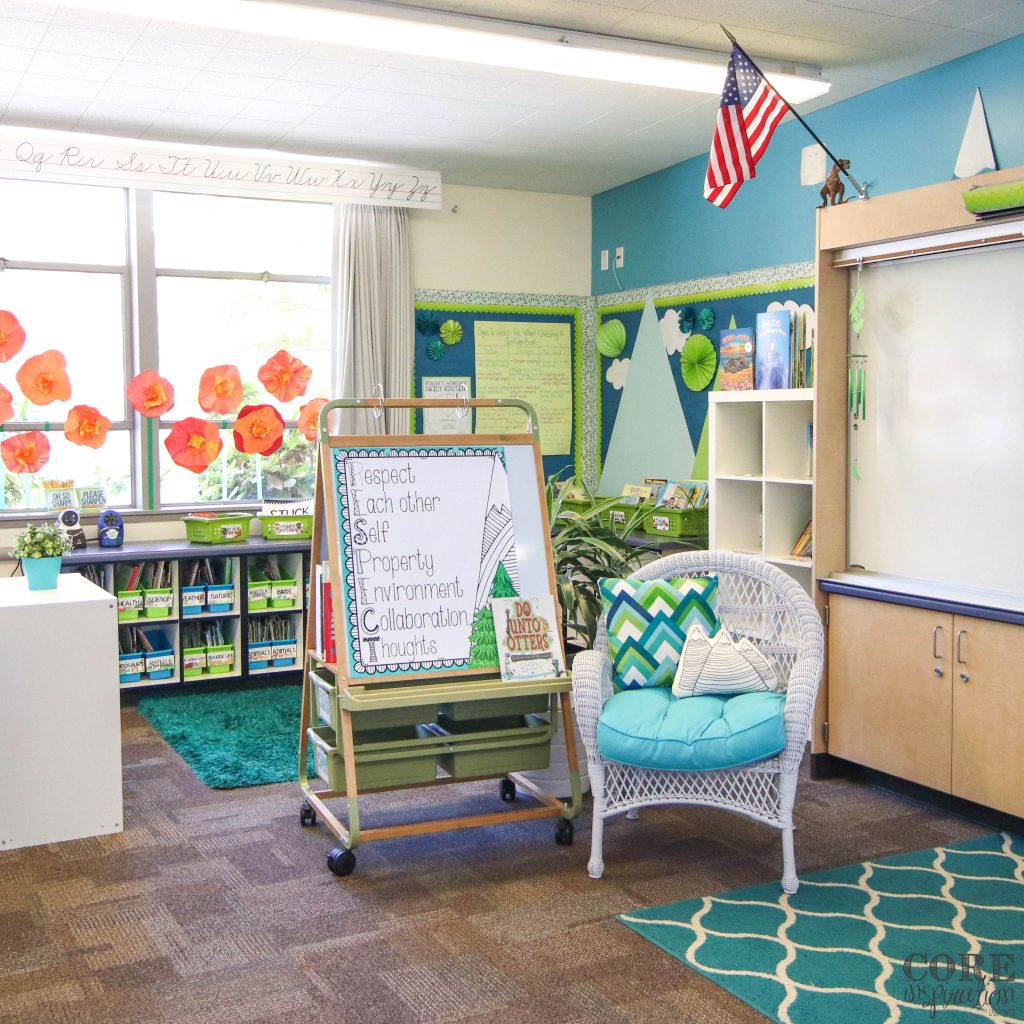
Over the past ten years in the classroom, my classroom management has evolved, and will continue to do so. I have had the opportunity to learn from many students who require very heavy behavior supports, and from those who easily adapt in any learning environment.
What I can say with confidence now is that I am in love with the classroom management approach I use, and know it can meet the unique needs of the wide spectrum of learners I teach year after year. Teaching does not feel like an exhausting battle. I do not spend my days putting out behavior fires. My students are respected by me. I am respected by my students. Best of of all…I know all my students are learning critical life skills for developing authentic long-term success. Here’s a peek at my classroom management journey…so far. I hope sharing this helps inspire you as you travel your own path toward finding a classroom management approach that feels just right for you and your students.
In my early years as a teacher, I used to rely heavily on awarding table points as my go-to classroom management approach. If you walked into my classroom back then, it appeared to be a well-managed environment where students were learning each day. Despite this surface-level look and feel of a controlled, productive learning space, I knew deep down the main reason my students were “well-behaved” was because I always had a carrot dangled in front of them.
During every transition, and throughout each block of work time, you could hear me saying things like, “Table one is looking very focused,” or “Let’s see which group can get ready the quickest,” or “I’m looking for students who have all their supplies ready for this activity.” As these words rolled off my tongue, I would walk to the front of the room and award table points to reinforce that the statement I had just made was true, or worth something.
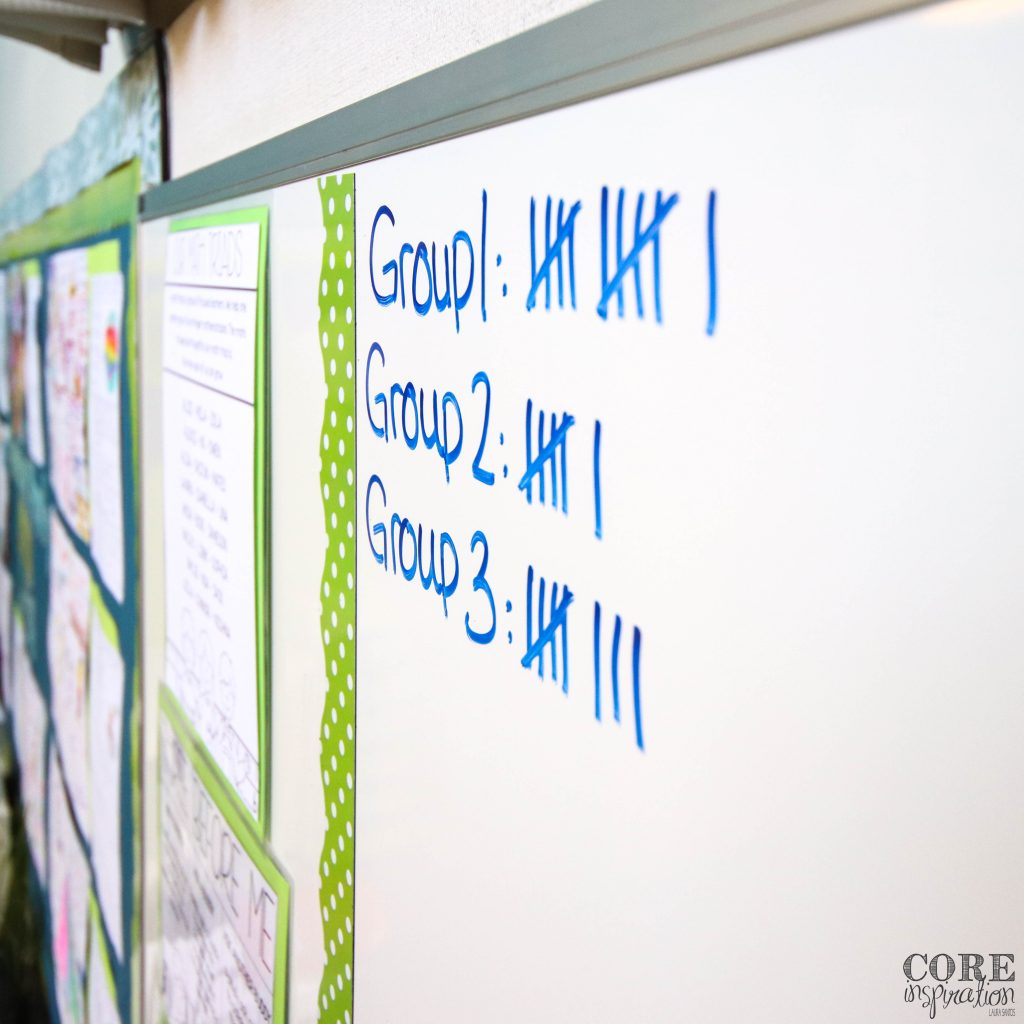
Some students would get giddy over the idea of getting a point, while others could care less. Unfortunately, all of them were learning that extrinsic motivation was more valued over intrinsic motivation in their learning space.
When we use classroom management gimmicks like table points, marble jars, and other reward systems, we are robbing our students of their opportunity to develop one of the most important life skills….intrinsic motivation. We are also (likely inadvertently) communicating to them we do not trust or respect them enough to make wise behavior choices… that the only way they could possibly make that decision is if they’re rewarded for it.
I learned this truth early on in my career, but I really struggled to break the habit of awarding those table points. It felt like not doing so would be so much harder that just continuing even though I knew it wasn’t what was best for my students. Have you ever felt this way?
Another classroom management tool I used from my first moments in the classroom was the overarching idea of R.E.S.P.E.C.T. It grew from a hand-made poster that hung in the classroom where I did my student teaching. At the beginning of each year, I would spend time introducing what each letter of the acronym represented in my classroom, and then hang the poster on the wall to guide our behaviors and interactions throughout the year.
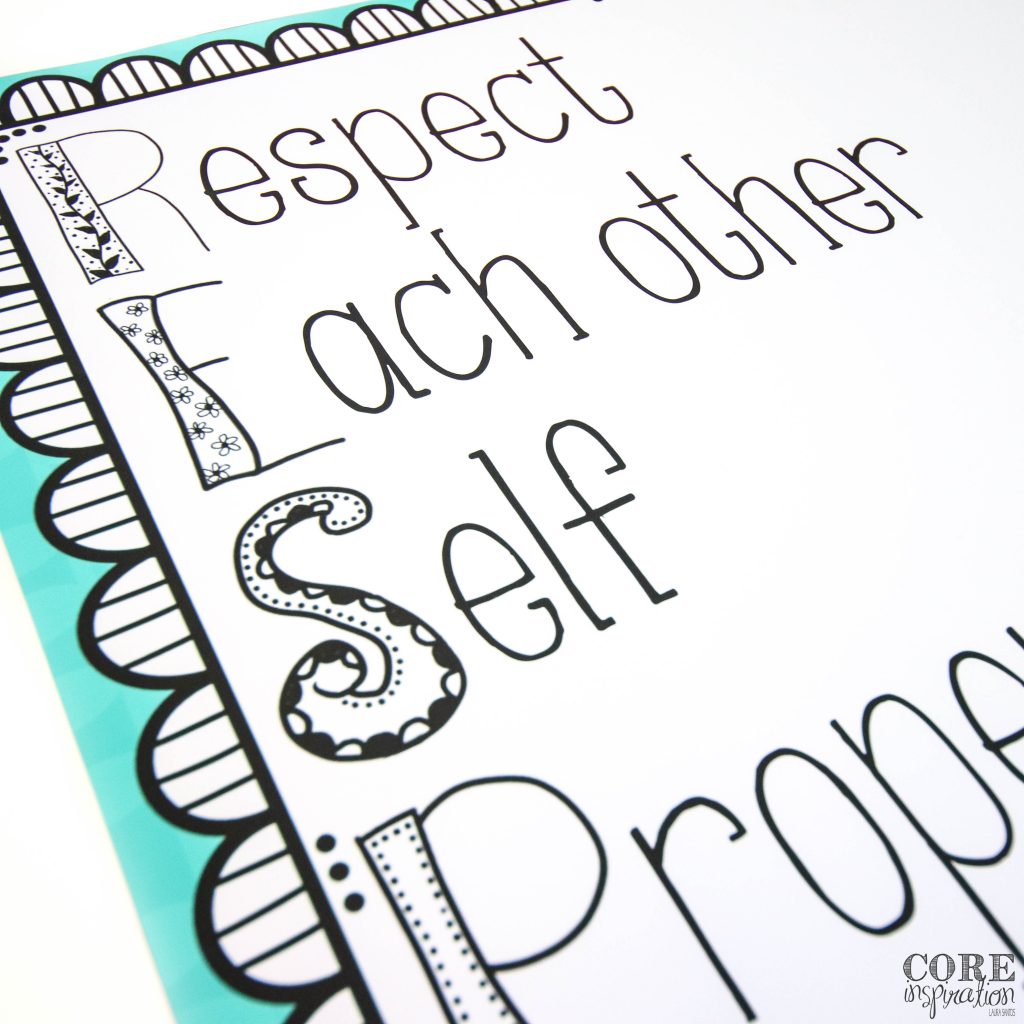
In theory, it was a great concept. What was missing was student buy-in. They heard that respect was important to me, and that I wanted them to display respectful behavior toward each other, themselves, classroom property, the environment, thoughts that were shared, and as they collaborated each day. What they didn’t fully understand was what this all really meant. It was shared once at the beginning of the year, and never meaningfully revisited later.
My students continued to demonstrate a surface-level appearance of respect, focus, motivation, and productivity, but they weren’t really learning the skills they needed to be genuinely respectful learners.
During the next couple years in the classroom, I read articles and books about how to better develop a classroom management system focused on intrinsic motivation and respect.
Some of my favorites to this day are The Power of Our Words and Teaching Children to Care (affiliate links).
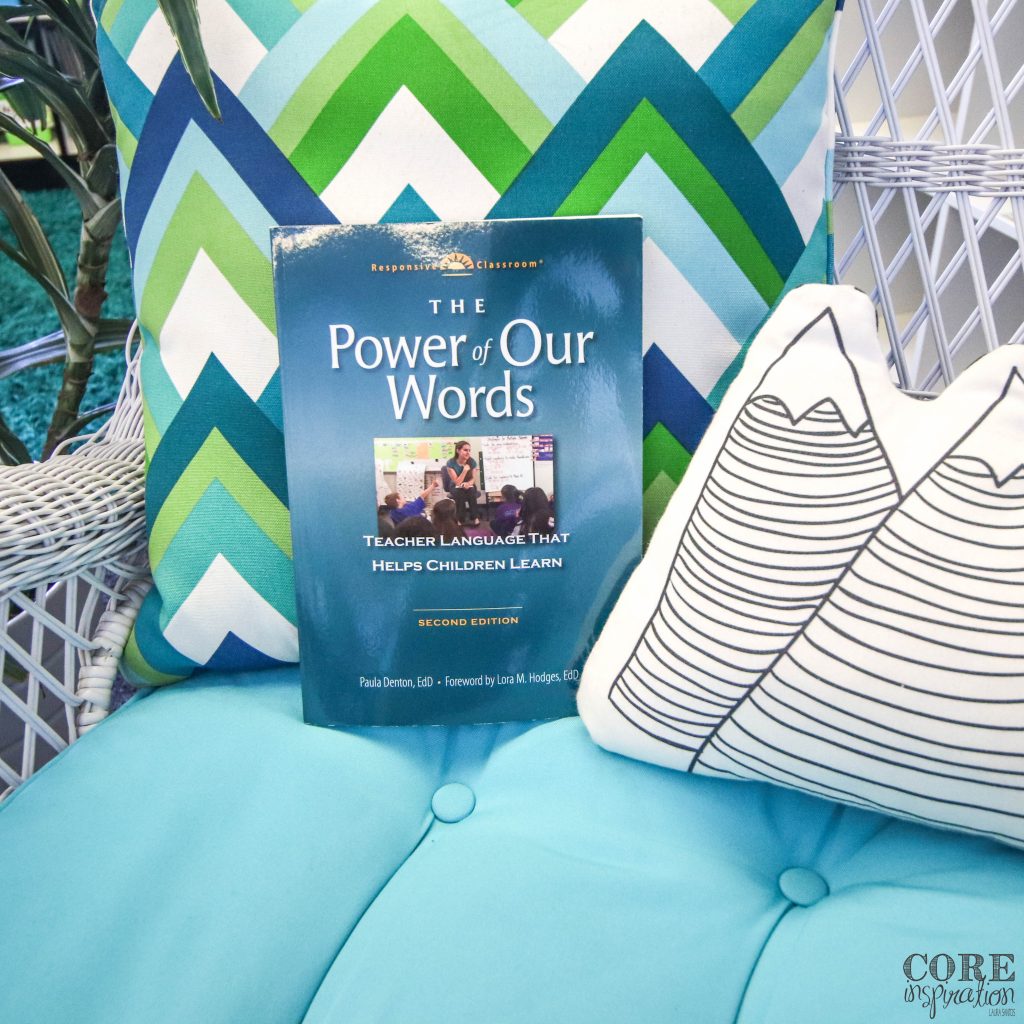
I began to change the way I talked by taking the focus off what I liked, or what I was pleased with, and shifted focus onto the benefit for my students. “I’m looking for students who have all their supplies ready for this activity,” changed to “Students who are ready have a sharpened pencil, their name on their paper, and their distractions tucked away.”
I also learned the importance of praising the process rather than the product. “Good job on that informational piece about the rainforest,” became “How does it feel to see all the research you gathered come together into this informational piece about the rainforest?”
During my professional development throughout those early years, I felt very validated because the strategies and classroom management ideals I valued weren’t only things that made me feel good as an educator, they were backed by research. The themes of intrinsic motivation and building respect were indeed important, but retraining my brain to speak and teach in ways that made them a focal point was extremely challenging.
I had grown up in classrooms where teacher-centered talk and product-focused language were used day in, and day out. That language was ingrained in my brain…as it likely is for many of you. It literally took years of practice, and feeling really cheesy about the words coming out of my mouth to break those habits.
It wasn’t until my sixth year of teaching that everything I had learned really started to come together. During that year I had the opportunity to attend a four-day training institute with Responsive Classroom. During that week, I learned about the value of morning meetings, closing circles, interactive modeling, meaningful teacher language, revisiting classroom routines, and so much more. It was truly a transformative experience that I recommend all teachers participate in if given the opportunity. Throughout the week, I felt so reassured that all the things I was longing for as a teacher were actually important…and really good for students.
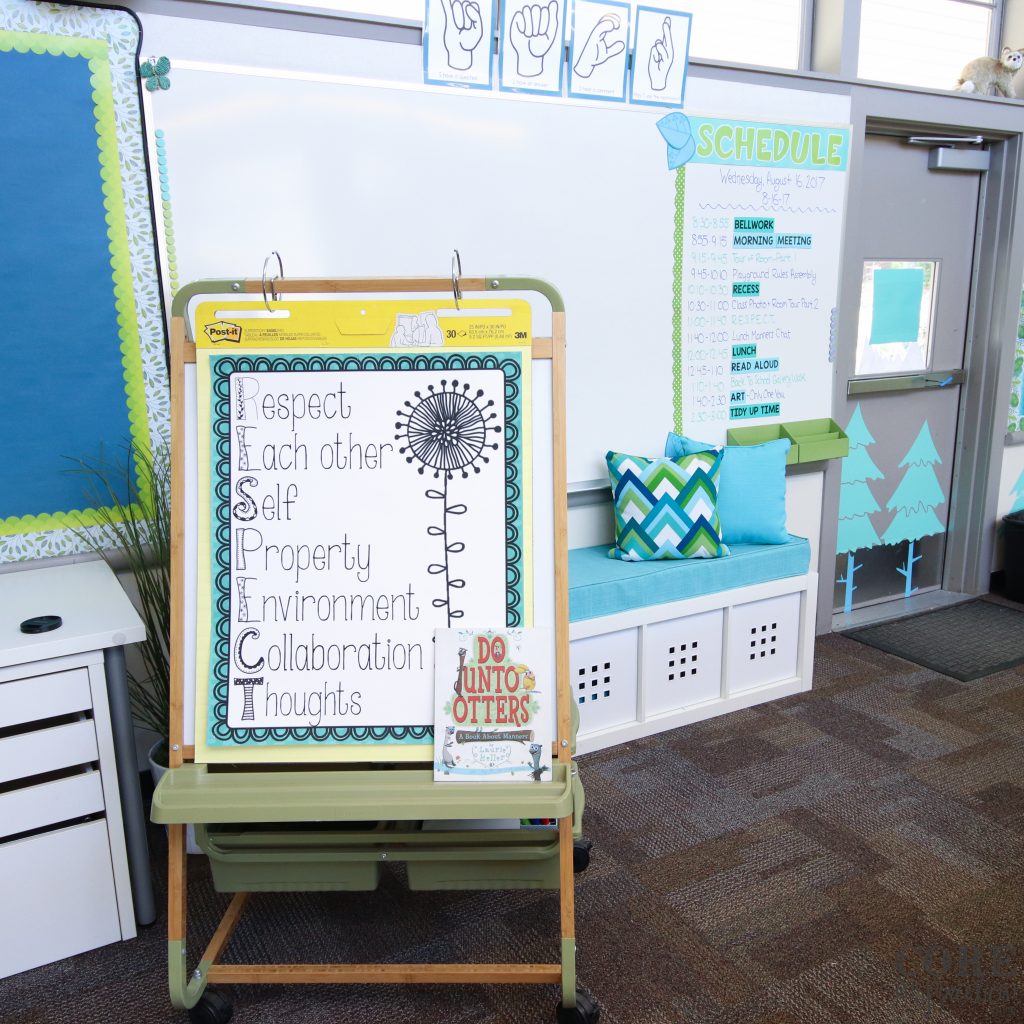
The biggest transformation made that week was a deeper understanding of the value of slowing down, helping students build a strong understanding of routines, and revisiting the most important and challenging routines multiple times throughout the year. I kept hearing, “You have to slow down before you can speed up.” So true. So true. So true.
That August, I headed back to my classroom to integrate my new learnings with the routines I had already been working so hard to master. The results were undeniable. Remember that classroom I mentioned at the beginning of this post? That one where I’m not exhausted by my classroom management approach, I’m not putting out fires, my students are respected, my students respect me, and they’re genuinely building intrinsic motivation? Yeah…that classroom vision came to fruition and has been gaining strength ever since.
Is my classroom management perfect? Ha! We’re teachers….nothing is ever perfect. But it sure does make me proud. Here’s a low down on the main components that make up the system I love so dearly.
On the first day of school, I ask my students, “What are some words you hope to use to describe your classroom this year?” They brainstorm their ideas, write them on a post it note, and add them to our class anchor chart. We discuss any common themes noticed as their ideas come together. I then have them brainstorm the types of behaviors we should avoid if we are trying to create the type of classroom they hope to have. These are also added to an anchor chart and common ideas are grouped together.
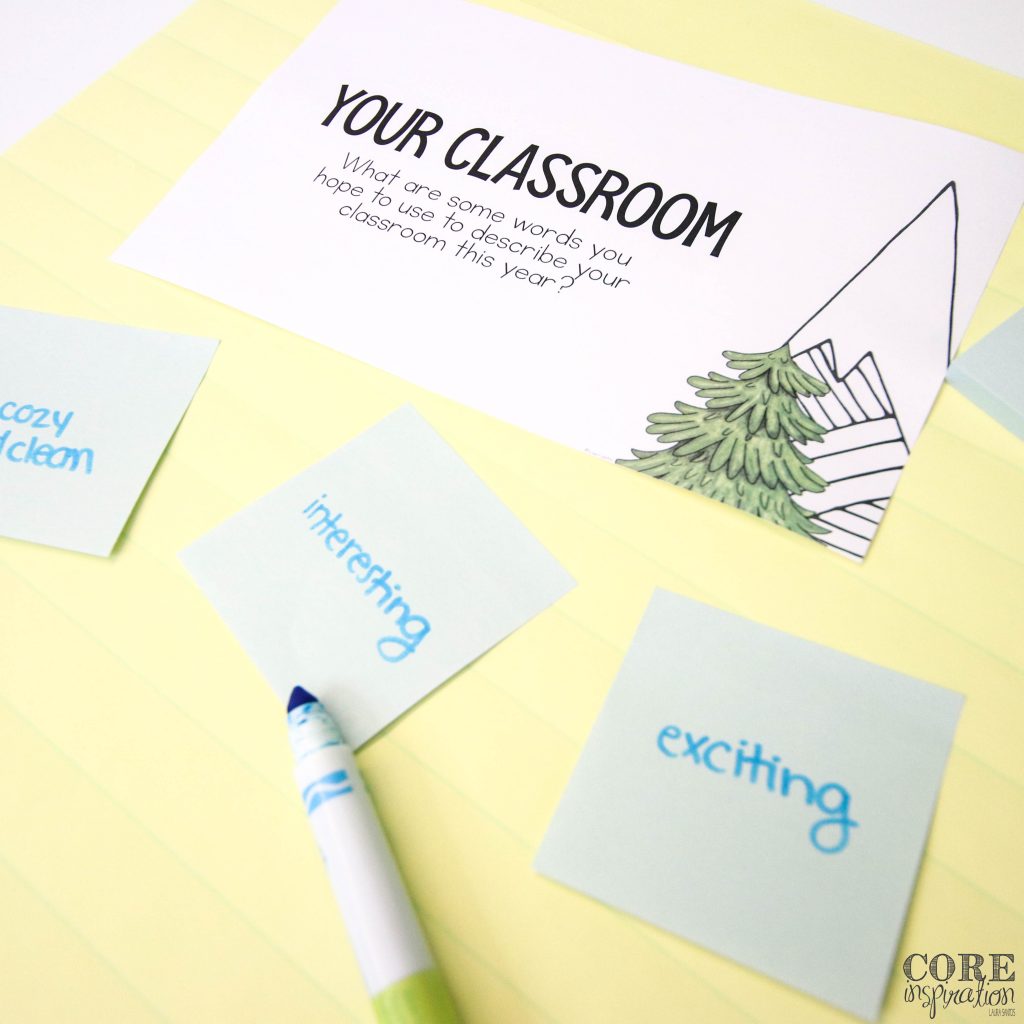
When students work with the teacher to paint a unique picture for what their ideal learning environment looks like and feel likes, they are immediately more invested in behaving in ways that help everyone achieve that goal. Discussions like these give students the opportunity to have a voice and play an important role in building a place where they feel they belong.
We then shift our focus to the fact that even the most respectful and responsible people make mistakes. No one has perfect behavior. Everyone deserves a moment to take a break when they are struggling with behavior so they can reflect. We need that time to brainstorm how to fix our mistake, and make a plan for moving forward in a respectful way. I introduce the idea of taking a break – a concept rooted in the Responsive Classroom approach to teaching and learning.
If a student makes a behavior mistake in the classroom, they will be politely asked to take a break. Taking a break means stepping away from their activity to a quiet place where they can be alone for a moment to reflect on their behavior. They are welcome to rejoin the group when they are ready to focus their energy in a productive way. I show them our “take a break spot” – a stool at the back table, and our back-up spot, a seat on our class bench in case the space at the back table is occupied. They each have the opportunity to practice heading to that spot on the first day of school so they have the opportunity to get a feel for taking a break. This practice emphasizes that taking a break is for anyone at any time they need it.
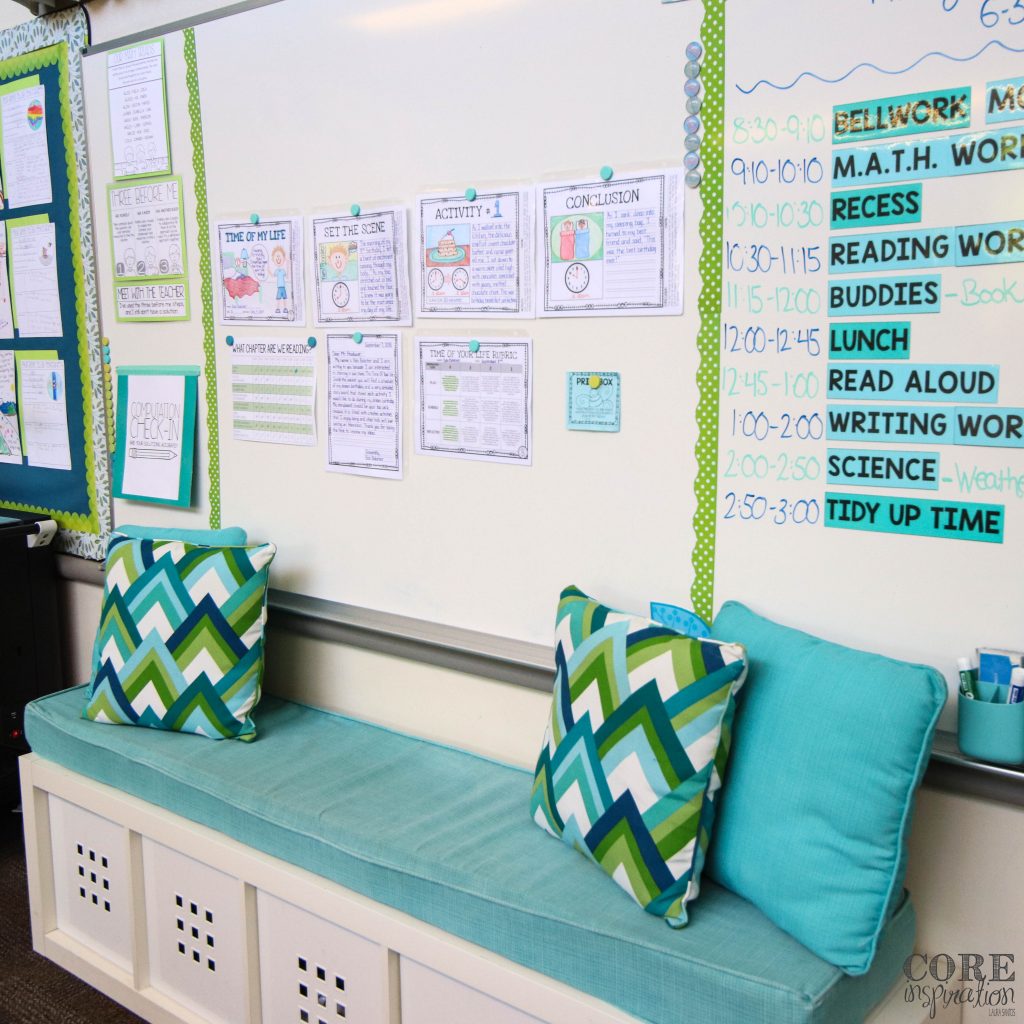
If a student chooses to continue with disrespectful behavior after they have taken a break, they are asked to reflect with more structure using a Fix It Ticket. A Fix It Ticket is a simple reflection page where students write their behavior reflection. The page includes:
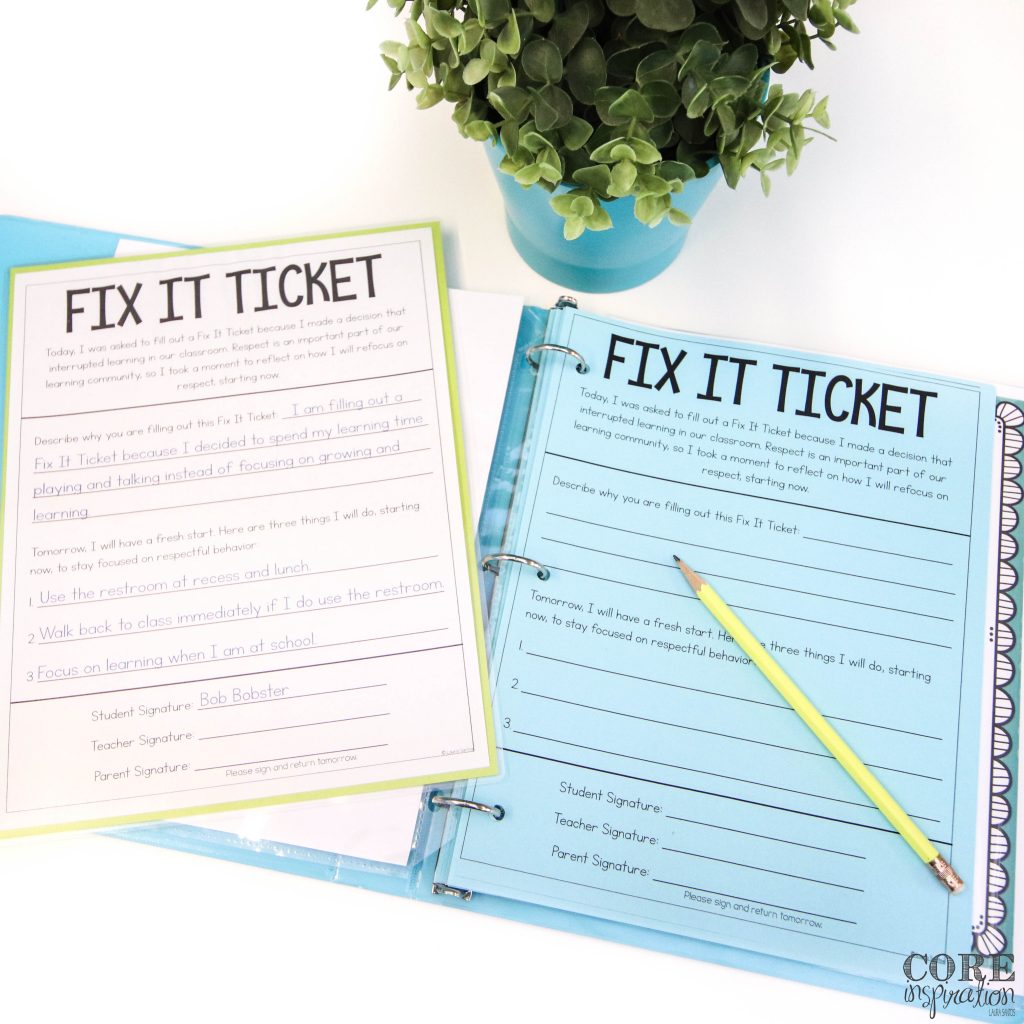
When a student completes their Fix It Ticket, they hand it to the teacher to sign, review, and add any additional notes needed. Students learn also learn that I will debrief with them at the next break (recess, lunch, or after school) rather than taking time away from other students to discuss. The ticket is then taken home that night so the student can discuss their behavior with a parent/guardian, have it signed, and return it the following morning.
The second day of school is focused on helping students build a stronger understanding of what respectful behavior looks like, sounds like, and feels like. We begin with a read aloud of Do Unto Otters by Laurie Keller. While reading, I point out how the author shows us what respectful behavior is, and what it is not. Following this read aloud, the guiding principle of respect is introduced using a large R.E.S.P.E.C.T. poster.
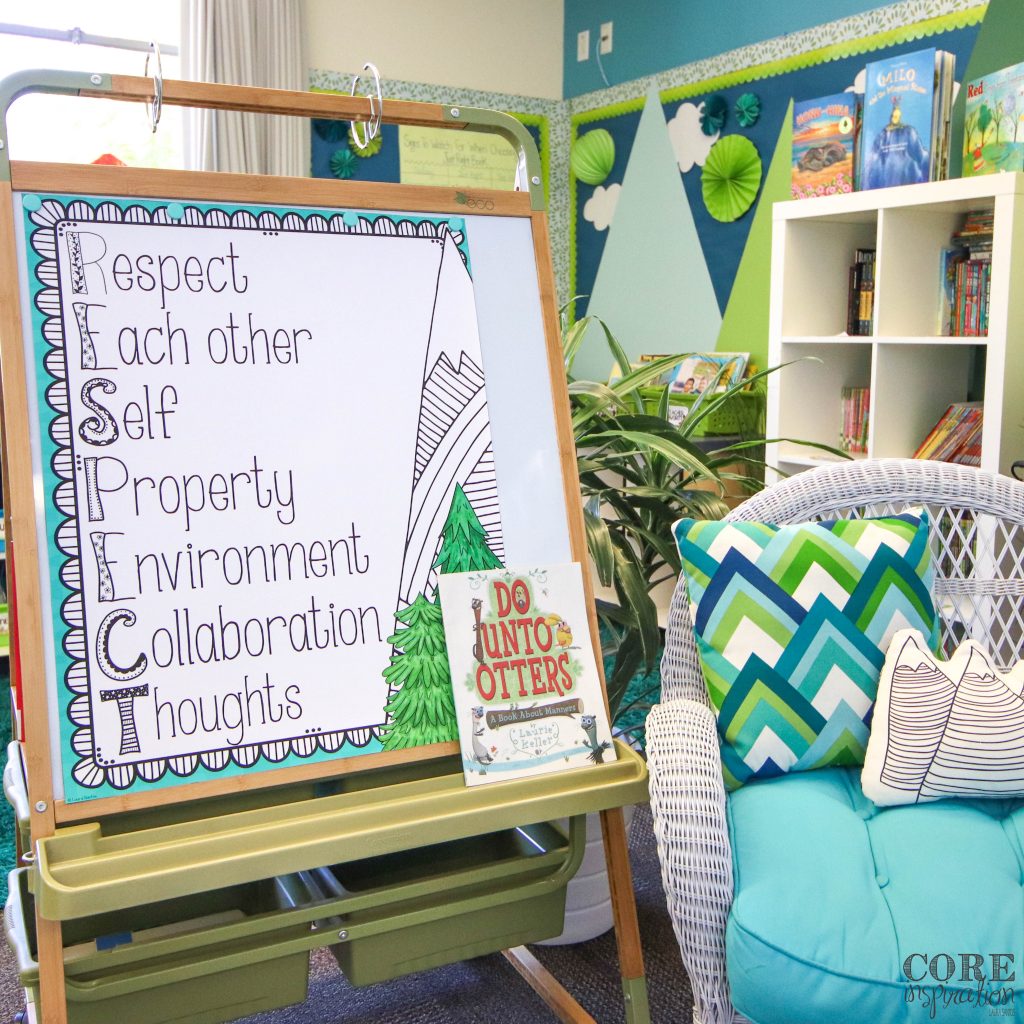
I begin by introducing what each letter in the acronym represents using mini posters that describe each word in the acronym. Each of these mini posters is placed next to a blank brainstorm poster around that room. Once all letters of the acronym are discussed, students are given time to visit each mini poster and write an idea using the following prompts.
I reference a list of books is very helpful if students need more support in brainstorming about one of the R.E.S.P.E.C.T. categories. The list has at least one picture book for each category that helps provide examples and inspiration for how students can show respect.
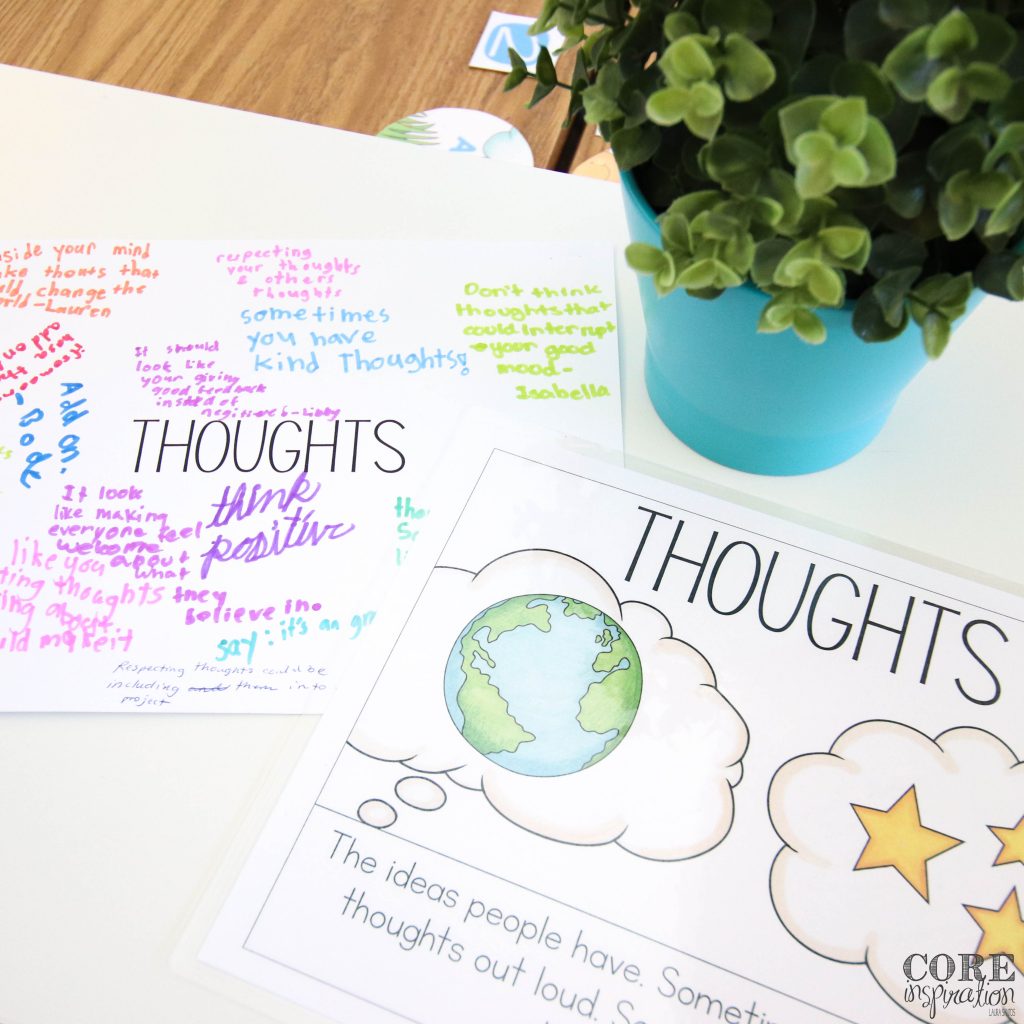
Once students have written an idea on each brainstorm poster, they head back to their seats where a reflection page is waiting for them. This page gives them an additional way to focus on what they have learned over the past two days while their peers focus on finishing the activity at hand.
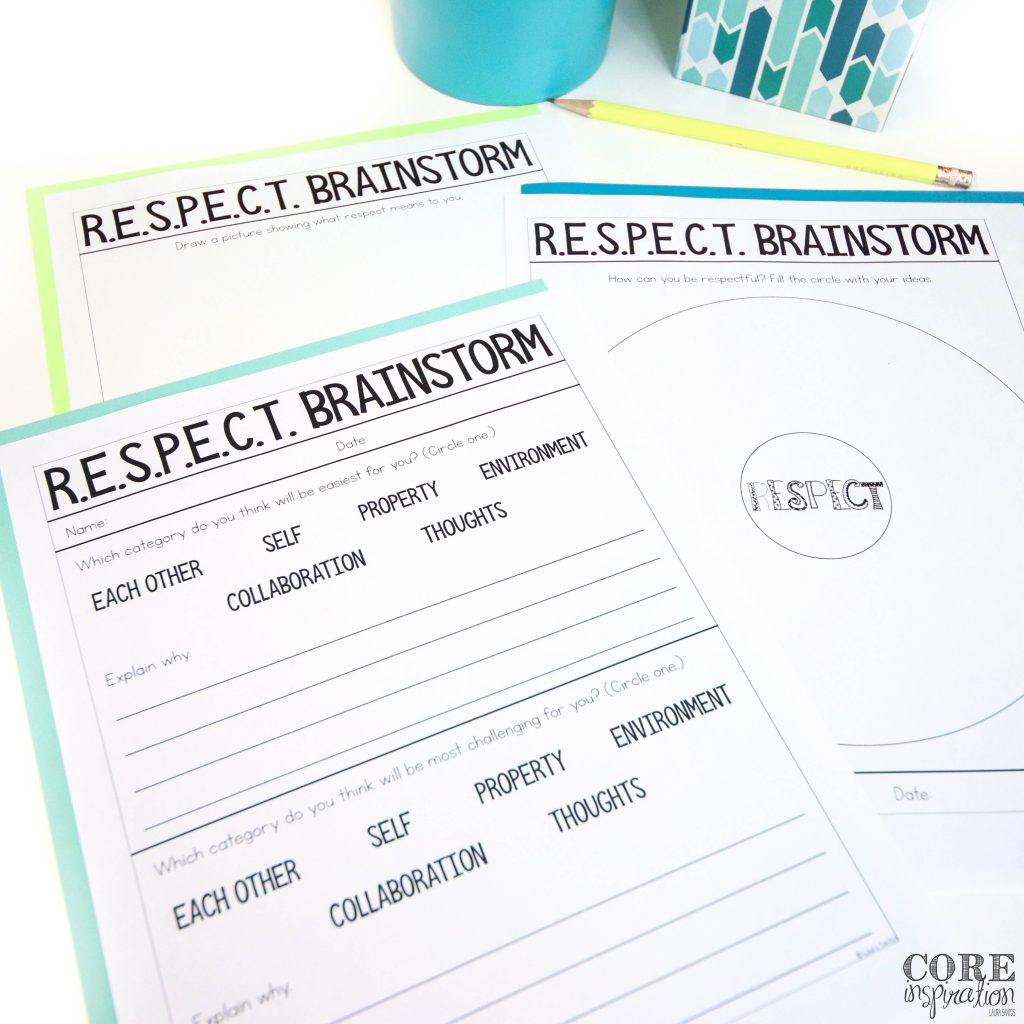
The final step for introducing R.E.S.P.E.C.T. at the beginning of the year is to complete the R.E.S.P.E.C.T. contract. This contract summarizes everything students have learned about our behavior routines and expectations, communicates these expectations to families, and emphasizes the importance of what has been discussed so students know they will be held accountable for their behavior, and provided with support for making respectful decisions throughout the year. I like to attach a cover letter to the contract so parents & guardians have some context for the contract, and can engage in a productive conversation around the importance of respect in the classroom.

After the introduction activities explained above, R.E.S.P.E.C.T. becomes our guiding principle for the duration of the school year. It is especially helpful during the first two weeks of school as we work as a class to write class rules together using the Responsive Classroom approach. Even after those first couple weeks, we refer to our poster on a consistent basis and revisit it after school breaks. Below are a few routines I follow as a teacher to ensure this guiding principle helps maintain a learning environment where everyone feels respected.
Once all the contracts have been returned, I hole-punch them and place them in our R.E.S.P.E.C.T. binder. This binder is kept in a place that is easy to access, but also private enough so students who may need to complete a Fix-It-Ticket have a quiet area to reflect on their behavior and make a plan for improvement.

I like to make it a habit to give these reminders in a calm, quiet voice when in close proximity to the student, rather than giving a reminder from across the room. This is a great way to show respect to your students and helps bring their energy to a more calm and focused place.
If possible, I briefly check in with the student after they begin their Fix-It-Ticket to remind him/her that the most important thing to do is reflect, make a plan for improvement, and return to learning with more focus and respect.
When a student needs to complete a Fix-It-Ticket, holding off on discussing the behavior until the next break in the day gives both of us time to cool down, move forward, and have a calm conversation about what went wrong.
Although it may be tempting at times to give a call or send an email following a Fix It Ticket, I like to leave it to my students to share what happened with their parents. This further communicates the confidence I have in their ability to monitor their behavior choices, and show respect at school.
If ever a parent follows up with an email requesting more information, I request that we all sit down together so the student knows he/she is an integral part of the entire behavior reflection process.
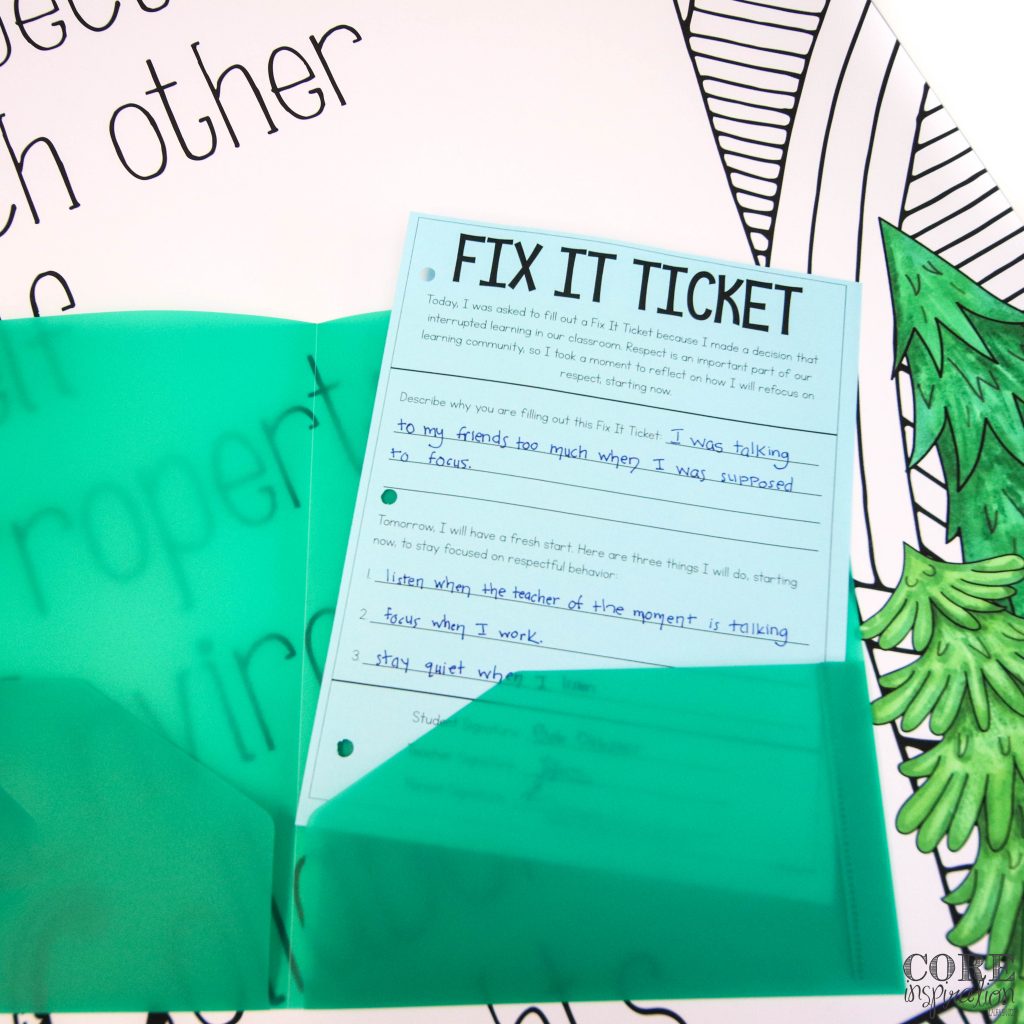
Practicing consistency and fairness is extremely important when implementing this system in your classroom as it builds a foundation for mutual trust and respect, and significantly reduces behavior problems. Some ways to demonstrate consistency include:
Each year, I teach students who need additional behavior supports. They participate in the introduction activities described above, and are in integral part of writing our classroom rules when it comes time to do so. They take breaks, and are provided with additional tools to help them make respectful behavior decisions.
The roll-out described above communicates to students that they are important, they are respected, and I will do everything I can to support them as they navigate their learning environment. With this message being repeated consistently and demonstrated every single day in our classroom, I begin to notice that students understand and truly believe that everyone deserves the supports they need. This eliminates students’ questions about fairness when they notice a classmate who needs more supports and uses different tools as they develop respectful and responsible behaviors each day.
Remember, it is possible for you to transform your classroom into a space where respect is the core focus, and students are more intrinsically motivated. I hope reading about my classroom management journey, and the specific details for how I introduce and implement my current approach to classroom management is helpful as you envision how you want to build your own community of respectful learners.
In the comments below, I’d love to hear about any challenges you are currently facing as you work to build a respectful learning environment. If you are looking for a few ready-to-use tools to implement the system I’ve described above, check out my R.E.S.P.E.C.T. Classroom Behavior Management Tools for Social-Emotional Learning.
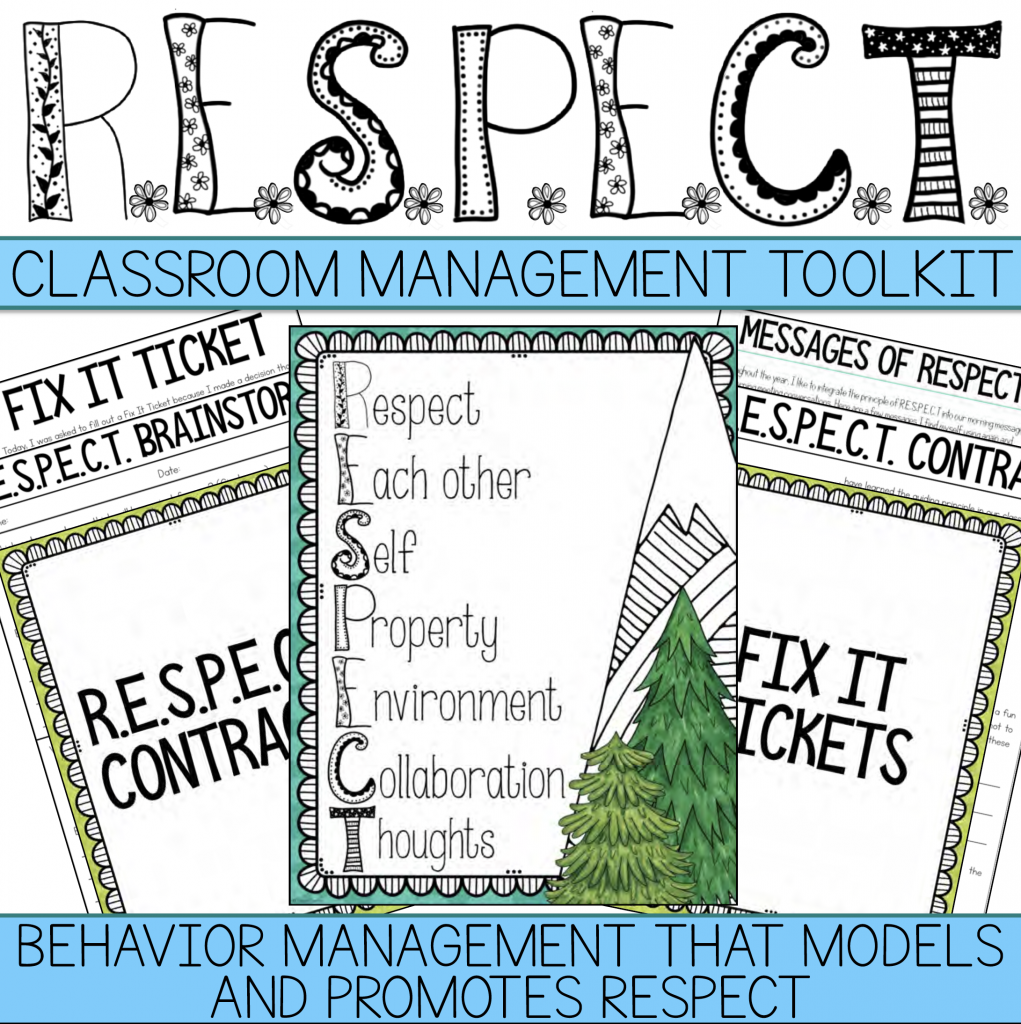
This post contains Amazon Affiliate links to make it easier for you to find the organizational tools shared in this post. To see all my favorite Amazon finds, visit my Amazon Influencer page here.

I’ve been an elementary teacher for ten years, and love sharing tips and resources that make differentiated learning more manageable for you. Thank you for visiting.
Learn More
Dropping by with weekly tips, classroom strategies, and free content created with you in mind.
Join me and other 2nd through 4th grade educators in the Teaching with Core Inspiration Facebook Group. This is a place to collaborate, ask questions, and learn how teachers like you are using Core Inspiration resources in their classrooms. Hope to see you there!
© 2024 Core Inspiration ∙ Website by KristenDoyle.co
26 Responses
Great post! Just bought both books and hit my principal up for the $ to attend a four day conference! Fingers crossed I can make it work and attend the conference before my school year begins.
Thank you Shelby! You are so efficient with getting those books ordered…I hope you love them as much as I do. 🙂 Fingers crossed that your principal will approve the four day institute – it was a game changer!
I’ve never felt so glued to reading someone’s blog post before! This post resonates so deeply with me, and I am incredibly appreciative of the time you took to reflect and share your thoughts and experience with classroom management. I currently feel the exact same way you felt in the beginning… things look under control and nice, but it’s because I’ve relied on dangling little carrots here and there. I am so excited to implement your R.E.S.P.E.C.T. model to my classroom this year. I’ll be teaching third grade for the first time in four years, after having taught first, and will be going through a four-day Responsive Classroom training before the start of the school year. I can’t wait to try some of the successful strategies you have used to help make this new year feel smooth(er) than it might have felt. Thank you for sharing this!
Hi Allie,
Thank you for reaching out so kindly, I really appreciate your feedback. I hope you enjoy teaching third grade…it’s my absolute favorite age to teach! They’re so eager to be independent, and still so excited about every learning opportunity. It’s a really magical age. The opportunity to attend RC’s four day institute before you get started with the new school year is such a treat. Wonderful that your admin is supporting that. 🙂 Have a fabulous school year!
Warmly,
Laura
I have always tried to run a responsive classroom and when I stumbled upon your resource last summer I decided to add it to my beginning of the year routine. I LOVED it and can not wait to use it again this school year. It provided such an amazing foundation for students, parents, and myself. Getting students involved in seeing why respect is important and guiding them through the process really helped me succeed with the responsive classroom approach. Thank you so much for the resource and for providing a little more incite with this post! I know my school year is going to be great and part of that comes from this resource and this approach.
Shannon,
I really appreciate you taking the time to share this wonderful feedback. It is so helpful to hear for other teachers who have implemented R.E.S.P.E.C.T. in their classrooms. I’m glad you and your students are enjoying the resource, and that you found this post helpful. 🙂 Enjoy the rest of your summer, and have a fabulous school year!
Warmly,
Laura
Thank you so much for putting this post together! I just purchased the resource on TPT so I can implement it. I love how it builds independence and doesn’t rely on rewards and points. I also imagine it helps build a strong classroom community. When it comes to breaks, how long do they typically go for? Also, is this then paired with your classroom jobs and economy? Thanks again!
Hi Anthony,
Thank you for taking the time to reach out, and for bringing this resource to your classroom. I am so excited for you and your students. 🙂 Yes, the approach definitely helps to build classroom community as well. Having a common language and a common set of expectations helps the students feel empowered to encourage one another to be respectful with kind reminders, which is such a magical thing to witness. It’s amazing how much a classroom can transform when the students are holding themselves and others accountable for respectful behavior, rather than the teacher being the dictator of “respect”.
When it comes to breaks, the students determine how long their break needs to last. They all get to practice taking a break during the first couple days of school, and we spend time during our morning meeting talking about the fact that some breaks are short and sweet, while at other times, we need more time to recollect and reset. Revisiting this throughout the year really helps to build their self-regulation skills, and fewer and fewer breaks are needed as the year progresses because they are able to identify when their behavior is headed in the wrong direction. Yet another way for them to feel empowered and independent. 🙂 We also talk about the fact that sometimes you may notice you need a break before I do, so it’s always okay to self-elect to take a break whenever you are feeling off balance.
I don’t have behavior paired with my classroom economy at all – that is solely used for building independence and responsibility for keeping the learning space tidy, organized, and ready for leaning. I don’t want them to tie their class cash system with good behavior because that becomes a reward when I prefer to build intrinsic motivation for respectful behavior. I do always point out that they are provided with opportunities each day to show respect for their environment and property through the class jobs and economy.
I hope this is helpful as you get up and running. 🙂
Warmly,
Laura
I love this post, thank you so much for the amazing information you shared! I was wondering if you have a blog post about your morning meetings and what they look like? Thank you again, you have inspired me!!
Hi Jennifer,
Thank you for the kind comment. 🙂 I don’t currently have any posts about morning meeting, but I highly recommend the Responsive Classroom website. Here’s a great playlist of videos to start with, and a great post to start with.
Warmly,
Laura
This approach sounds wonderful! How would you recommend using this method with kindergarten? Many of the resources I have read seem to be a better fit for older students.
What grades do you think can use this?
Hi Erik,
I personally have used this in grades 2-4, but I can see it working well for grades 2-6.
Laura
How do you handle students who are unwilling to take a break and refuse to do so and refuse to fill out the fix-it ticket?
Hi Zoe, thank you for reaching out.
I have not encountered students who refuse to take a break or fill out a fix it ticket. There are certainly some students who take more time to begin filling out the ticket. Keep in mind that everyone has a different response to redirection and some students need more time to process the emotions associated with a fix it ticket. There will be students who shed a tear or show signs of frustration. I always give them space so they can find calm and recenter without being pushed. The time we spend at the beginning of the year talking about respect and the care we put into building rules together helps even students with the most challenging behavior needs buy in to this system. This is part of showing them the respect they deserve. When they genuinely feel and see that you follow through on delivering respect to them, the begin to feel safer in your classroom and more open. They see that this system truly is designed to support them, not to punish them.
Also keep in mind that those students who would likely be more resistant to behavior redirection are on our radar in the first hour of the first day of school. Being proactive and setting up additional behavior supports for them starting on day 1 is essential for their success and the success of this system.
I hope this insight is helpful.
Warmly,
Laura
Hi Laura,
Thank you for this blog post! I hope to be implementing it this year in my third grade classroom. The only question I had is if a student doesn’t return the fit it ticket do you give the student another chance the next day? Or get in touch with the parents right away?
Thanks again for all of your wonderful resources! I can’t wait for this school year to start!
Hi Meghan,
Thank you for the kind comment. 🙂 I usually give them an extra day because it’s typically an honest mistake. If it doesn’t come back after two days, I reach out to parents.
Warmly,
Laura
I absolutely love this approach! When prompting students to complete a Fix it Ticket, do you allow them to enter the break spot again? I’m imagining that some students may have difficulty accepting my request to complete one and may need to self-regulate before! Also, do you find that some incidents require a parent contact immediately rather than a Fix it Ticket? Thanks!!
Yes, when filling out a Fix It Ticket, they head to the take a break spot and i head back there and hand them the respect binder so they can complete their ticket. They open the binder when they feel ready and have had a moment to breath and self regulate. If there is an incident that does require parent contact in addition to a ticket, I let the student know that’s the path I’ll be taking when we sit down and debrief together.
Hi! I have loved reading through this blog. Such good information and resources. I had a question about what you said here,
“After the introduction activities explained above, R.E.S.P.E.C.T. becomes our guiding principle for the duration of the school year. It is especially helpful during the first two weeks of school as we work as a class to write class rules together using the Responsive Classroom approach.”
I was under the assumption that R.E.S.P.E.C.T were the classroom “rules”. You mention it being a guide and then writing classroom rules together. So they are separate? What would be rules you would create with the class? Are you holding them accountable/fix it ticket for breaking the R.E.S.P.E.C.T or the classroom rules you create as a class? Just trying to grasp the whole concept. Thanks so much! 🙂
Hi Jessica, thank you for reaching out. I do also have the students write class rules together and use this as a guiding principle that sets the stage for the more specific rules they write. You can see the exact process and how it all comes together during the first several days of school in this post. ????
Thank you! This post is so helpful!!!
Dear Laura,
Many thanks for this comprehensive resource that respects the dignity of each child! I cannot wait to implement it in my classroom this year. I have a quick question for you about launching it on the “First Day of School”. We are having a split first day, with 1/2 of the class starting Monday, the other 1/2 Tuesday and the whole class on Wednesday. Would you recommend introducing it with each half or waiting until all are present together on Wednesday?
Thanks so much for your thoughts!
Hi Mary Olivia,
Thank you for the kind message. I think I would hold off on launching until that Wednesday when they are all together for the first time. 🙂 This way, the students know that everyone in the classroom is on the same page and part of the same experience.
Warmly,
Laura
Hi! I love this idea! So you do not use this as your class rules so how do you manage both the rules your class comes up with and Respect?. I was under the impression that this was considered your rules. I’m trying to learn more about responsive classroom so any help would be greatly appreciated!
Hi Megan, thank you for reaching out. I do also have the students write class rules together and use this as a guiding principle that sets the stage for the more specific rules they write. You can see the exact process and how it all comes together during the first several days of school in this post. 🙂